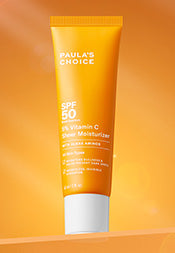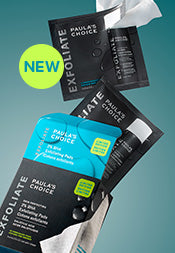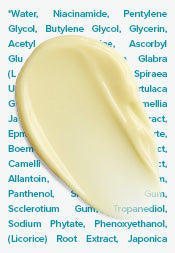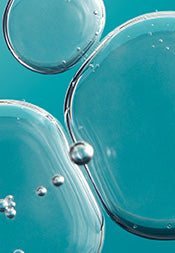Top 4 Causes of Brown Spots and How To Get Rid Of Them
Liver spots, sun spots, age spots…pesky brown spots on the face or body may be known by various names, but they’ve one thing in common - they seem to become more frequent with age. Besides giving away your age in a sneaky way, they also seem to appear insidiously out of nowhere. Let’s take a look at the causes of brown spots and see how you can manage them.
What causes brown spots?
There can be several causes of brown spots. Sun overexposure, certain skin, and even medical conditions could contribute to the appearance of brown spots.
1) Sun overexposure
This is one of the most common culprits of brown spots in Singapore, given that we’ve almost 365 days of sunshine. Sun exposure produces melanin, the pigment that gives our skin its colour. In a case of sun overexposure, melanin is overproduced, leading to the formation of brown spots.
If you think sunlight is the only light that gives rise to brown spot, think again. Exposure to UV light (e.g. from computers or tanning beds) also contribute to brown spots.
While brown spots can form on any part of the body, they’re most likely to form where the body which receives the most sunlight. For example, the face, shoulders, arms, back and the back of the hands.
2) Skin conditions
Besides sun overexposure, certain skin conditions can also leave unsightly brown spots or marks on the body.
- Post-inflammatory hyperpigmentation: you may have already noticed that brown marks left by a bout of serious acne could be very tough to get rid of.
- Melasma: this is a skin condition characterized by grey-brown patches on the cheeks, chin, forehead or on the nose bridge. While melasma can be caused by prolonged exposure to the sun and can affect everyone, pregnant women are usually more susceptible to it due to hormonal changes during their pregnancy. Which is why melasma is also known as “pregnancy mask”.
- Solar lentigines: also known as liver spots, these are harmless spots on the skin which are the result of UV exposure and melanin (skin pigment) accumulating within the skin cells.
- Ephelides (freckles): triggered by sun exposure, these are clusters of brown spots which are most visible on the skin of fair people.
- Riehl’s melanosis: this is a form of contact dermatitis (a form of skin inflammation) that are believed to be due to sun exposure followed by the trigger of certain creams or perfumes.
- Poikiloderma of Civatte: this is a skin condition that usually affects women on the sides of the neck. Common contributors include accumulated sun exposure, having fair skin, hormonal changes or sensitivity to perfumes and fragrances.
3) Certain medications
Don’t be surprised that some medicine contributes to the appearance of brown spots too, especially when they cause the skin to be more sensitive to the sun.
Some of these spots-causing medicine include:
- Estrogen (a class of hormones for sexual and reproductive development)
- Sulfonamides (a type of antibiotic)
- Amiodarone (used for treating life-threatening heart rhythm disorders)
- Tetracycline (an antibiotic used to treat a wide range of bacterial infections)
- Phenothiazine (medicine used to treat serious mental and emotional disorders)
- Phenytoin (an antiepileptic/anticonvulsant medicine)
4) Certain illnesses
- Liver disease: while sun exposure could cause brown spots (also known as liver spots), liver diseases could also cause these flat, irregular-sized spots to appear.
- Addison’s disease: this affects the production and regulation of various hormones in the body. Hyperpigmentation occurs due to the overproduction of a substance known as corticotropin which stimulates the production of melanin (skin pigment).
- Hemochromatosis: this is a genetic disorder in which the body absorbs too much iron from the diet. The excess iron is deposited in different organs, heart, and joints, causing damage as time passes. Hyperpigmentation, especially on the face, is most commonly seen in patients.
So when are brown spots are a health concern?
Most dark spots are generally harmless as they’re flat and have the same texture as the rest of the skin. However, some of them could be cancerous and become a cause for concern. Please always visit the dermatologist for a skin check-up to ensure that none of the brown spots are abnormal or cancerous.
Choose the right skin care products for brown spots
While most brown spots are harmless and painless, most of them are still considered an eyesore, especially if they’re on the face. There are many off-the-shelf skin pigmentation treatment methods that you can conveniently buy to minimize the appearance of brown spots.
1) Vitamin C
Vitamin C has been known to be one of mother nature’s safest and most effective skin lightening agent. Besides reducing the production of melanin (the skin pigment that gives our skin its colour and dark spots), vitamin C is also rich in antioxidants which combat skin ageing due to sun exposure.
While there are many skin care products with vitamin C as one of their ingredients, its concentration should be high enough for it to have any dark spot lightening effect at all. If the vitamin C concentration in the skin care product is less than 1%, it’s simply too mild to manage skin pigmentation. So, it’s important to choose skincare products with quality vitamin C in concentrations which are high enough. Paula’s Choice has a couple of vitamin C dark spot treatment that works.
A. Paula’s Choice Resist C15 Super Booster
This skin care booster has a 15% vitamin C concentration, making it one of the most effective pigmentation treatments out there. Combined with skin-nourishing ingredients, you’ll soon see lighter spots and a more even, luminous skin tone. Resist C15 Super Booster is also water-light, making it very easy for your skin to lap up its goodness.
To use: gently pat 2-3 drops of the booster onto your face. Or mix a few drops with your moisturizer or creams. Before you head out during the day, it’s sensible to apply a sunscreen with SPF30 or greater. This will go a long way to minimizing existing dark spots while preventing new ones from surfacing.
B. Paula’s Choice Resist 25% Vitamin C Spot Treatment
Resist 25% Vitamin C Spot Treatment is something which you could use if dark spots have been bothering you persistently. Delivering its dark spots' busting effectiveness with an exceptional 25% concentration of pure vitamin C and a controlled-release delivery system, you’ll see a clear, radiant glow in due time.
To use: apply Resist 25% Vitamin C Spot Treatment onto brown spots and other visible signs of ageing. After applying the Spot Treatment, remember to finish off with a sunscreen with SPF30 or greater during the day.
2) Hydroquinone and AHA/BHA exfoliant
Hydroquinone is found in many dark spot treatment creams. It slows down excessive melanin production (our skin pigment) which causes dark spots on the face and other parts of the body.
BHA (salicylic acid) or AHA (glycolic acid) are exfoliants that often work in tandem with hydroquinone for the pigmentation-fading effect to be more apparent. BHA and AHA remove old skin cells to make room for new ones, offering a rejuvenating effect and lightening brown spots in the process.
A. Paula’s Choice Skin Perfecting 2% BHA Liquid
This leave-on liquid exfoliant gently sweeps away dead skin to reduce the appearance of dark spots. It also has other skin care benefits such as unclogging pores, smoothening fine lines and hydration.
To use: gently wipe BHA Liquid over the face (avoid eyes) with a cotton ball. Do not rinse. During the day, complete your skincare routine with a broad spectrum sunscreen of at least SPF30.
B. Paula’s Choice Resist Daily Smoothing Treatment 5% AHA
Just like the 2% BHA Liquid, this is also a leave-on exfoliant that lightens dark spots to reveal clear, soft skin underneath.
To use: gently wipe the AHA liquid exfoliant over the face, avoiding delicate eye areas. Do not rinse. During the day, complete your daytime skin care routine with a broad spectrum sunscreen of at least SPF30.
3) Niacinamide
Niacinamide addresses a wide range of skincare issues, such as skin pigmentation, uneven skin tone, enlarged pores and fine lines. It also boasts wonderful hydrating properties as it forms a protective layer on the skin surface.
A. Paula’s Choice Resist 10% Niacinamide Booster
Beyond minimizing the appearance of unsightly dark spots, Resist 10% Niacinamide Booster also manages other skin care issues such as redness, enlarged pores, and dryness. Moreover, it’s also delightfully versatile in that you can blend it into your lotions or moisturizers for an instant spot-minimizing boost.
To use: Resist 10% Niacinamide Booster is easily absorbed into the skin because of its water-light consistency. Apply 2-5 drops on your face, neck or chest.
B. Paula’s Choice Resist Pure Radiance Skin Brightening Treatment
Boosting vitamins and plant-based ingredients that lighten dark spots, soothes and calms the skin, you can be reveling in clear and evenly-toned complexion.
To use: use Resist Pure Radiance Skin Brightening Treatment twice a day. Apply this booster and then use a sunscreen of at least SPF 30 for better sun protection during the day.
Conclusion
Dark spots may seem to appear insidiously and are pesky skin care issues to manage. However, with the right choice of skincare products and due diligence in using sunscreen, you can prevent new spots from popping up.









